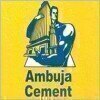Filter interviews by
Action Tesa Electrical Engineer Interview Questions and Answers
Action Tesa Electrical Engineer Interview Experiences
1 interview found
(1 Question)
- Q1. Types of power factor
- Ans.
Power factor is the ratio of real power to apparent power in an electrical system.
Leading power factor: When the load is capacitive, the current leads the voltage.
Lagging power factor: When the load is inductive, the current lags the voltage.
Unity power factor: When the load is purely resistive, the current is in phase with the voltage.
Power factor correction: Techniques used to improve power factor and reduce reactive...
(1 Question)
- Q1. Types of load power factor
- Ans.
Load power factor can be leading, lagging or unity.
Leading power factor occurs when the load is capacitive, such as in a motor with a large capacitor bank.
Lagging power factor occurs when the load is inductive, such as in a transformer or motor.
Unity power factor occurs when the load is purely resistive, such as in a heating element.
Power factor can be improved by adding capacitors to the circuit.
Low power factor can r...
Interview Preparation Tips
Top trending discussions






Interview questions from similar companies

I applied via Newspaper Ad and was interviewed before Nov 2021. There were 2 interview rounds.

(2 Questions)
- Q1. What is your previous salary
- Q2. Tell about yourself and family
Interview Preparation Tips

I am good work and good health a
(2 Questions)
- Q1. Baring mantinesh ..
- Q2. Ger box manufacturing ..

(2 Questions)
- Q1. Where are the job location
- Q2. What is the Annual package
- Ans.
The annual package for Junior Engineers typically ranges from $50,000 to $70,000 depending on the company and location.
Annual package for Junior Engineers varies based on company and location
Typically ranges from $50,000 to $70,000
May include benefits such as health insurance, paid time off, and retirement plans
Work related questions
Documents verification

I applied via Naukri.com and was interviewed before Mar 2021. There were 4 interview rounds.
Technical questions related to domain.
(1 Question)
- Q1. What is carbonation.
- Ans.
Carbonation is the process of dissolving carbon dioxide gas in a liquid.
Occurs naturally in carbonated mineral water
Used in the production of carbonated beverages
Can affect the pH of a liquid
Can cause corrosion in concrete structures
(6 Questions)
- Q1. What is your family background?
- Q2. What are your salary expectations?
- Q3. Why should we hire you?
- Q4. Why are you looking for a change?
- Q5. What are your strengths and weaknesses?
- Q6. Tell me about yourself.
Pratical test by Auto level.
Interview Preparation Tips

I applied via Referral and was interviewed before Oct 2020. There were 3 interview rounds.
Interview Questionnaire
3 Questions
- Q1. Past Experience as stated on my resume.
- Ans.
I have over 10 years of experience in software engineering, focusing on full-stack development and team leadership.
Led a team of 5 engineers in developing a scalable e-commerce platform, resulting in a 30% increase in sales.
Implemented CI/CD pipelines that reduced deployment time by 50%, enhancing team productivity.
Worked on a healthcare application that improved patient data management, ensuring compliance with HIPAA ...
- Q2. Different maintenance related problems faced and solutions provided
- Ans.
Maintenance problems and solutions
Equipment breakdowns - regular maintenance checks and repairs
Lack of spare parts - inventory management and ordering in advance
Inefficient processes - process optimization and automation
Safety hazards - regular safety inspections and training
Environmental concerns - proper disposal of hazardous waste
Budget constraints - prioritization and cost-effective solutions
- Q3. Project related in depth questions on domain of my working as stated iny resume
Interview Preparation Tips
Be confident and do not over explain as all of the persons taking interviews in JSW Cement are rich in experience of their domain.

Interview Questionnaire
1 Question
- Q1. What is your salary expectation -?
- Ans.
I expect a competitive salary that reflects my experience, skills, and the value I bring to the team.
Based on industry standards, I believe a salary range of $120,000 to $140,000 is appropriate for my level of expertise.
I have over 8 years of experience in software development, which includes leading projects and mentoring junior engineers.
In my previous role, I successfully increased project efficiency by 30%, demonst...

I applied via Naukri.com and was interviewed in Jun 2021. There were 5 interview rounds.
Interview Questionnaire
2 Questions
- Q1. Types of motor
- Ans.
There are various types of motors used in electrical engineering, including AC motors, DC motors, stepper motors, and servo motors.
AC motors: Alternating current motors that are commonly used in household appliances and industrial machinery.
DC motors: Direct current motors that are often used in battery-powered devices and electric vehicles.
Stepper motors: Motors that move in discrete steps and are commonly used in rob...
- Q2. 2 types of motor generally used in plant
- Ans.
The two types of motors generally used in plants are AC motors and DC motors.
AC motors are commonly used for high-power applications and are more efficient.
DC motors are often used for low-power applications and provide better speed control.
Examples of AC motors include induction motors and synchronous motors.
Examples of DC motors include brushed DC motors and brushless DC motors.
Interview Preparation Tips

Interview Questionnaire
3 Questions
- Q1. Tell me about urself,
- Q2. Site related questions like silo slip form details, piling details.
- Q3. Achievements in short
- Ans.
Led multiple successful projects, enhancing system performance and team collaboration, resulting in significant cost savings.
Implemented a new microservices architecture that improved system scalability by 40%.
Spearheaded a cross-functional team to reduce deployment time from weeks to days, increasing productivity.
Developed a predictive maintenance system that decreased downtime by 30%, saving the company $200,000 annu...

- Q1. Self-Introduction
- Q2. Why AC systems are preferred over DC systems?
- Q3. Why in transformer oil is used?
- Q4. What is the Principle of motors?
- Q5. Tell me transformer protections?
- Q6. Why you have chosen engineering ?
- Q7. About your salary expectation?
- Q8. What time you will take to join the company?
- Q9. What is Water cement ratio?
- Q10. What happen when water to cement ratio decreases?
- Q11. Why is tensile strength of concrete check?
Action Tesa Interview FAQs
Tell us how to improve this page.
Action Tesa Interviews By Designations
- Action Tesa Assistant Engineer Interview Questions
- Action Tesa Junior Engineer Interview Questions
- Action Tesa Junior Engineer Production Interview Questions
- Action Tesa Senior Executive Interview Questions
- Action Tesa Junior its Engineer Interview Questions
- Action Tesa Senior Engineer Interview Questions
- Action Tesa Manager Interview Questions
- Action Tesa Electrical Engineer Interview Questions
- Show more
Interview Questions for Popular Designations
- Senior Engineer Interview Questions
- Junior Engineer Interview Questions
- Service Engineer Interview Questions
- Executive Engineer Interview Questions
- Field Engineer Interview Questions
- Electrical Design Engineer Interview Questions
- Senior Electrical Engineer Interview Questions
- Shift Engineer Interview Questions
- Show more
Electrical Engineer Interview Questions from Similar Companies
Action Tesa Electrical Engineer Reviews and Ratings
based on 4 reviews
Rating in categories
|
Assistant Engineer
98
salaries
| ₹1.6 L/yr - ₹4.7 L/yr |
|
Junior Engineer
45
salaries
| ₹1.4 L/yr - ₹3 L/yr |
|
Area Sales Manager
43
salaries
| ₹4.2 L/yr - ₹7.6 L/yr |
|
Marketing Executive
40
salaries
| ₹3 L/yr - ₹5 L/yr |
|
Engineer
21
salaries
| ₹2 L/yr - ₹4.8 L/yr |

JK Cement

ACC

Ambuja Cements

Nuvoco Vistas
- Home >
- Interviews >
- Action Tesa Interview Questions












